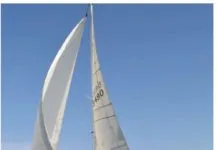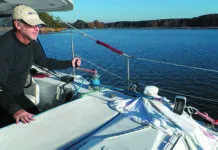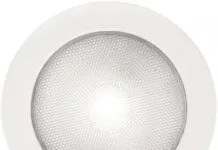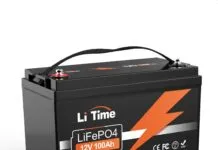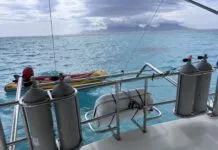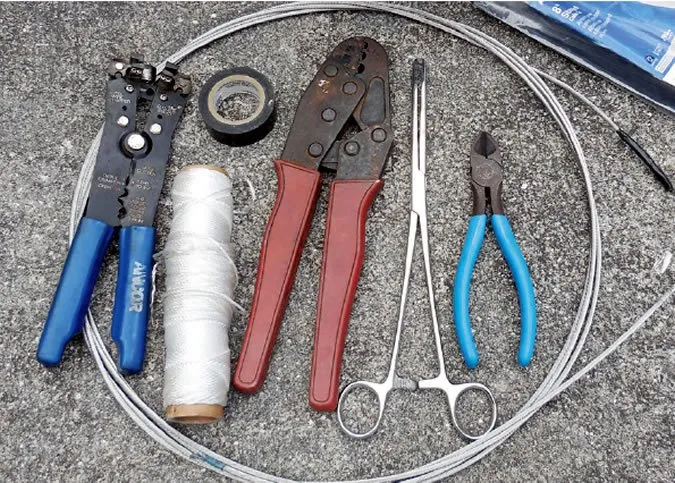Propulsion of Tomorrow
There is a lot of dispute about the benefits of diesel-electric propulsion over traditional diesel, and comparable numbers are hard to come by. Could you arrange a test? Diesel-electric benefits in charging house batteries and powering the fridge are obvious, but propulsion is less so. What I would like to see is a chart of the kinetic energy of each system in the X-axis, and in the Y-axis, consumed fuel. That ratio should be the value that counts. Of course, a range of appropriate propellers would also have to be tested.
9.9-horsepower Outboard Engines Put to the Test
Todays 9.9-horsepower four strokes pack just the right amountof punch for a portable dinghy engine. The downside, as you may have guessed, is their hefty weight. The three Practical Sailor tested range in weight from 82 to 92 pounds. All are two-cylinder, water-cooled engines that take about a quart of oil, and all are pull-start models, with chokes that need to be used only when the engine is cold. All come with a standard 3.1-gallon plastic fuel tank, a fuel hose, and an aluminum propeller. In terms of propulsion, none of these portable outboard engines has it all. So after evaluating how easy each was to operate, transport, store, and maintain, we based our recommendations on weighing each engines pluses and minuses.
Portable Marine Refrigeration Test
One of the advantages of a compressor-driven portable refrigerator is that it can also serve as a freezer. And compared to thermo-electric coolers, they require fewer amps to do the job. Cruising boats need to be energy efficient, so amp consumption with a 12-volt power supply was one of the key factors Practical Sailor looked at in this test. As in any marine refrigeration test, insulation is a key factor in efficiency, so our comparison also tried to single out the best insulated units. Ultimately, the linear compressor system used in the Engel and Norcold refrigerator/freezers proved to be more efficient.
Diesel Fuel Tank Replacement
If given a free hand at design, material selection, fabrication and installation, what would Practical Sailor ideal replacement diesel fuel tank look like? The ideal diesel fuel tank installation should possess, above all else, access. A boat fuel tank that is completely and permanently buried beneath or behind fiberglass, timber, insulation or joinerwork is a tank cannot be inspected for corrosion, chafe, structural damage or leaks. Fuel tank baffles, inspection ports, and properly insulated fittings (in the case of a metal tank) are essential. Diesel tank contamination is inevitable, so any tank design for a cruising sailboat must take that into consideration.
Chandlery: Filter BOSS
For people concerned about losing fuel flow to their sailboat auxilliary engine while underway due to a clogged fuel filter, the FilterBOSS looks like a promising solution. The FilterBOSS can be ordered as a stand-alone unit ready to be plumbed into your existing fuel system ($950), or as part of a pre-mounted system containing your choice of two Racor filters (various models available). The unit we received for review was the 500FG Dual Filter Package, which includes a FilterBOSS with wiring harness and two Racor 500FG filters mounted and connected with rigid tubing on a pre-drilled, composite panel ($1,565). It features Type 1 copper tubing (.035-inch wall thickness), Bi-Lok CA360 grade brass fittings, heavy-duty valves (with Viton seals), and a Con-X weather-tight cannon plug for the wiring harness. The system also allows a convenient way to polish your fuel and rid it of debris that may clog your fuel system
Marine refrigeration: Thermoelectric Cooler Test
The main drawback of thermoelectric coolers is power usage. This will likely be an issue during extended use or for boats with small battery banks and anemic charging systems. The 106-130 amp load, over a 24-hour period, is about twice as much demand as a built-in evaporative sytem and about three times the demand of the most efficient-and most expensive-installed systems. Also, thermoelectric units are limited in their ability to cool internal temperatures, usually to a maximum of about 40 degrees below the ambient temperature.
Morgan 41 – Used Boat Test:
The Morgan 41 sloop is arguably one of the best looking of many lovely dual-purpose sailboats that the Cruising Club of America handicap rating system engendered. One owner described his boat as a Bermuda 40 for a regular Joe, only prettier. Designer Charley Morgan traces the cruiser-racers heritage, particularly below the waterline, back to Olin Stephens famous Finisterre, and Comanche, a 40-foot centerboarder built by Wirth Munroe, son of famed sharpie designer and South Florida pioneer Commodore Ralph Munroe.
Jabsco Oil Changing System Turns Chore Into Cakewalk
The best way to get all of the oil out of the engine (after a thorough warm-up) is to drain it from the plug at the bottom of the pan. In boats, however, its often tough or impossible to get at that plug. The optimum solution is to have an oil-change system permanently installed, with a hose from the oil sump to a bulkhead-mounted pump.
Dinghy Engines
The light, easy-to-start Honda BF2 fends off challenges from 3 newcomers.
Mailport: 12/06
MARINE INSURANCE REDUXI have been reading with much interest your articles about marine insurance this year (April and May 2006).


